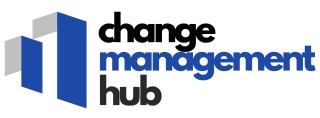
Understanding Comprehensive Category Management
A Holistic Approach to Managing Categories
Comprehensive category management is an essential facet of procurement, offering a holistic approach that transcends traditional buying tactics. It emphasizes understanding categories as distinct business units, each having its own unique set of products, supply chain intricacies, and customer demands.
Category managers play a crucial role in this management strategy, ensuring that the category’s needs align with broader business goals. They focus on developing category strategies that not only optimize spend but also improve supplier relationships and enhance the supplier base. This requires a deep dive into market dynamics and data-driven insights to tailor the right sourcing and procurement approaches.
The process does not end at strategic sourcing; it filters through the entire management process, affecting how products and goods services are sourced, delivered, and even how customer satisfaction is measured. One critical aspect is the ability to harness data effectively, using management software and tools to track spend, monitor suppliers’ performance, and ensure cost savings. This, in turn, drives the development of robust strategies that cater to the ever-evolving market conditions.
To master this art, it’s important to view category management not as a singular task but an ongoing, strategic management category. Engaging with effective change management techniques will elevate the process, ensuring that it is responsive to both current and anticipated shifts in the marketplace.
Key Elements of Successful Category Management
Identifying Essential Building Blocks
Successful category management encompasses several inherent elements that ensure smooth execution and tangible benefits. At its core, it revolves around strategic sourcing and spend management, focusing on efficient procurement processes. Category managers need to develop a deep understanding of each category, supported by robust data analysis.
- Data-Driven Decision-Making: To optimize the management strategy, leveraging data is crucial. By analyzing procurement data and market trends, category managers can tailor their strategies and adjust to dynamic conditions. Understanding the product, market, and supply chain intricacies is vital.
- Supplier Relationships: Building and maintaining strong supplier relationships is fundamental. Strategic cooperation with suppliers not only ensures quality sourcing but also offers opportunities for collaboration on product innovation. These relationships foster trust and mutual growth.
- Comprehensive Category Strategies: Every product or service category demands a unique approach. Developing tailored strategies based on thorough analysis ensures that each category effectively supports the overall business objectives and customer needs.
- Cross-Functional Collaboration: Collaboration across departments ensures comprehensive category plans. The synergy between procurement, finance, and marketing paves the way for nuanced insights and practical strategies.
- Continuous Improvement Process: Best practices advocate for ongoing evaluation of category strategies. Continuous improvement helps in adapting to market changes and enhancing supply chain efficiency.
A comprehensive approach requires a dedication to these practices, underpinned by a strategic management process. By focusing on these key elements, organizations can achieve significant cost savings and enhance their procurement processes for sustained success. For an in-depth understanding of the role of a business analysis associate in managing these elements, explore the insights available at understanding the role of a business analysis associate in change management.
Challenges in Implementing Category Management
Overcoming Obstacles in Category Management Implementation
Implementing category management can be a complex endeavor, often fraught with challenges that can impede progress. Understanding these hurdles is crucial for category managers aiming to streamline their management process and achieve strategic sourcing goals.
One of the primary challenges is aligning the category strategy with the overall business objectives. This requires a deep understanding of the company’s strategic goals and how category management can contribute to achieving them. It’s essential for category managers to ensure that their strategies are not only aligned with procurement goals but also support the broader business strategy.
Another significant challenge is managing supplier relationships effectively. Building strong, collaborative relationships with suppliers is vital for successful category management. However, this can be difficult due to varying supplier capabilities and market dynamics. Category managers need to employ best practices in supplier relationship management to foster trust and collaboration.
Data-driven decision-making is another area where challenges often arise. The ability to analyze and interpret data effectively is crucial for identifying cost savings and optimizing spend management. However, many organizations struggle with data quality and accessibility. Implementing robust management software can help overcome these issues by providing accurate, real-time data insights.
Resistance to change is a common obstacle in the implementation process. Employees and stakeholders may be hesitant to adopt new processes or strategies. Effective change management strategies are essential to address this resistance and ensure a smooth transition. For insights into managing such transitions, you might find it helpful to read about the shift from traditional to postmodern ERP systems.
Finally, the lack of a clear category management strategy can hinder implementation efforts. Without a well-defined plan, category managers may struggle to achieve their objectives. Developing a comprehensive category strategy that outlines clear goals, processes, and metrics is crucial for success.
By addressing these challenges head-on, businesses can enhance their category management efforts, leading to improved procurement outcomes and stronger supplier relationships.
Role of Technology in Category Management
Leveraging Technology for Enhanced Category Management
In today's fast-paced business environment, technology plays a pivotal role in optimizing category management. The integration of advanced tools and software solutions can significantly enhance the efficiency and effectiveness of procurement processes. By leveraging technology, businesses can streamline their management strategies, improve supplier relationships, and achieve substantial cost savings.
Data-Driven Decision Making
One of the most significant advantages of using technology in category management is the ability to harness data for informed decision-making. Data-driven insights allow category managers to analyze spend patterns, evaluate supplier performance, and identify opportunities for strategic sourcing. This approach not only aids in developing robust category strategies but also ensures that decisions are aligned with the overall business objectives.
Automation and Efficiency
Automation is another critical aspect where technology can make a difference. By automating routine tasks such as order processing and supplier communication, businesses can reduce manual errors and free up resources for more strategic activities. Management software solutions offer features like source-to-pay automation, which streamlines the entire procurement process from sourcing to payment, enhancing overall efficiency.
Enhancing Supplier Collaboration
Technology also facilitates better collaboration with suppliers. Through digital platforms, businesses can maintain transparent communication channels, ensuring that supplier relationships are nurtured and optimized. This transparency helps in building trust and fostering long-term partnerships, which are crucial for successful category management.
Market Analysis and Strategic Planning
Advanced analytics tools enable businesses to conduct comprehensive market analysis, providing insights into market trends and customer preferences. This information is invaluable for category managers when developing category strategies and aligning them with market demands. By staying ahead of market trends, businesses can ensure their products and services remain competitive.
In conclusion, the role of technology in category management cannot be overstated. By embracing technological advancements, businesses can enhance their management processes, drive strategic sourcing initiatives, and ultimately achieve better outcomes in their supply chain management.
Case Studies: Successful Category Management
Proven Examples of Efficient Category Management
Insight into real-world practices provides valuable lessons for procurement and category managers striving to optimize their processes. Successful category management often hinges on strategic initiatives that are data-driven and focus on building strong supplier relationships.- Retail Industry Overhaul: In one notable instance, a leading retailer redefined their category management approach by investing in robust data analytics. By focusing on spend management and aligning their category strategies with market demands, they effectively streamlined their supply chain. This strategic sourcing process not only led to enhanced product availability but also significant cost savings—a critical goal for any category manager.
- Automotive Sector Transformation: A major player in the automotive industry demonstrated the power of supplier collaboration. Their category managers developed a strategic management category approach that emphasized long-term supplier relationships. This business strategy fostered innovation, accelerated product development, and ultimately improved customer satisfaction by aligning products with market needs.
- Technology Company’s Adaptation: A renowned technology firm successfully overhauled its category management strategy by integrating cutting-edge management software into their procurement process. Their management strategy enabled an agile response to supply chain disruptions, ensuring continuous supply of goods and services. The implementation of data-driven strategies allowed for precise source-to-pay operations, underscoring the importance of technology in the management process.













